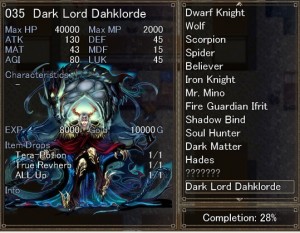If there’s one thing that is well known within the circle of game developers, that is the players of their games are very, very hard to please. It’s true that game developers and designers aren’t telepaths and know everything the player’s thinking, but that still didn’t justify player’s actions sometimes. It seems they always have the way of getting the intentions of the designers wrong, then come back and blame the designers for everything they haven’t done wrong.
In other words, no matter what the developers do, there are always someone that’s not happy.
While this is indeed a very sad matter, there are ways to get around that.
Remove unnecessary stuff
We humans may have unlimited potential, but we do have limited attention. Most of the time, we don’t need every single piece of information, even if it’s something that seems important. One example comes from the Mega Man series. The first game in the series feature a score counter that’s shown on the top of the screen, there’s also an item that when collected, adds up a multiplier at the end of the stage which gives more points. Each Robot Master also comes with a Clear Point. (and I must add, I don’t know why some of them are higher than others when they’re equally hard, maybe that’s just because of me.) Then, Capcom found out that this game is so difficult that clearing the game is a feat in itself, and since score is only calculated from enemies and boss destroyed and multiplier items gotten, meaning people are going to get the same range of score anyways, later Mega Man games do away with the scoring system altogether, and never speaks of it ever again in all Mega Man games after that. (Well, some of the other spin-offs has a rank system, but players with better techniques are getting higher ranks thus make the system actually useful)
Obviously, Mega Man Series get away with the entire score system is just a Special case due to the game’s difficulty and linear gameplay. In most of the games, it’ll be confusing to throw every single unnecessary mechanic out. Thus, the more accessible way of managing unnecessary data, is to keep them under the hood so players can direct their attention elsewhere. A common practice in STGs (Shoot’em ups) is to blur out the HUD Elements when the player sprite is on top of them. Since the player’s current location, together with the bullets’ current location are something players want to have more attention directed to.
Make necessary stuff stand out – But not too many
While we’re still on the topic of STGs, it’s not uncommon for these games to notify the player, either by audio or video means, that they have extra resources. (Bombs, Lives or Power-Ups) which stems from the similar practice. The reason being that while we want to keep the user’s attention on the main gameplay, we also want to direct their attention to their available resources when these changes. Now, if they actually used said resources, they’ll get feedback in the form of actually using resources – It’s only fair that they’ll get some kind of feedback when things go the other way.
So we let the unnecessary stuff become hidden, and the core stuff becomes the center of attention. Then for the really necessary stuff, we’ll just make it stand out so it can grab the user’s attention.
Note that this tactic, while seems cool on paper, has a big chance to mess up if the player don’t know what to do. For example, say there’s an adventure game with some puzzle elements. The player is now facing a control panel full of buttons. Suddenly, a red button lit up. Most of the players will then reach for the red button since it grabs their attention. Then, after doing that, a green and a blue button lit up together.
Now the player is confused – which button should I press? The green one, the blue one? Or press them together? While the player is busy thinking about that, the control panel exploded due to inactivity, killing the player.
This exact practice is actually popular in older adventure games. However ultimately the trial and error approach would leads to more angry players than clever or lucky players that figured out the correct way in the first few tries.
In short, don’t overwhelm player with big number of “necessary stuff”, in most of the cases, one is enough. If absolutely needed to do two or more in one go, try using some way to warn the player (a.k.a grabbing their attention) first.
We can actually continue talking about perceptions and how that’s also unreliable, but for a specific reason, we’ll leave this to the next blog.
In the next blog, we’ll talk about how to extract what the player really want from their feedback. Yeah, this totally seems like telepathy now…
Until the next time….
